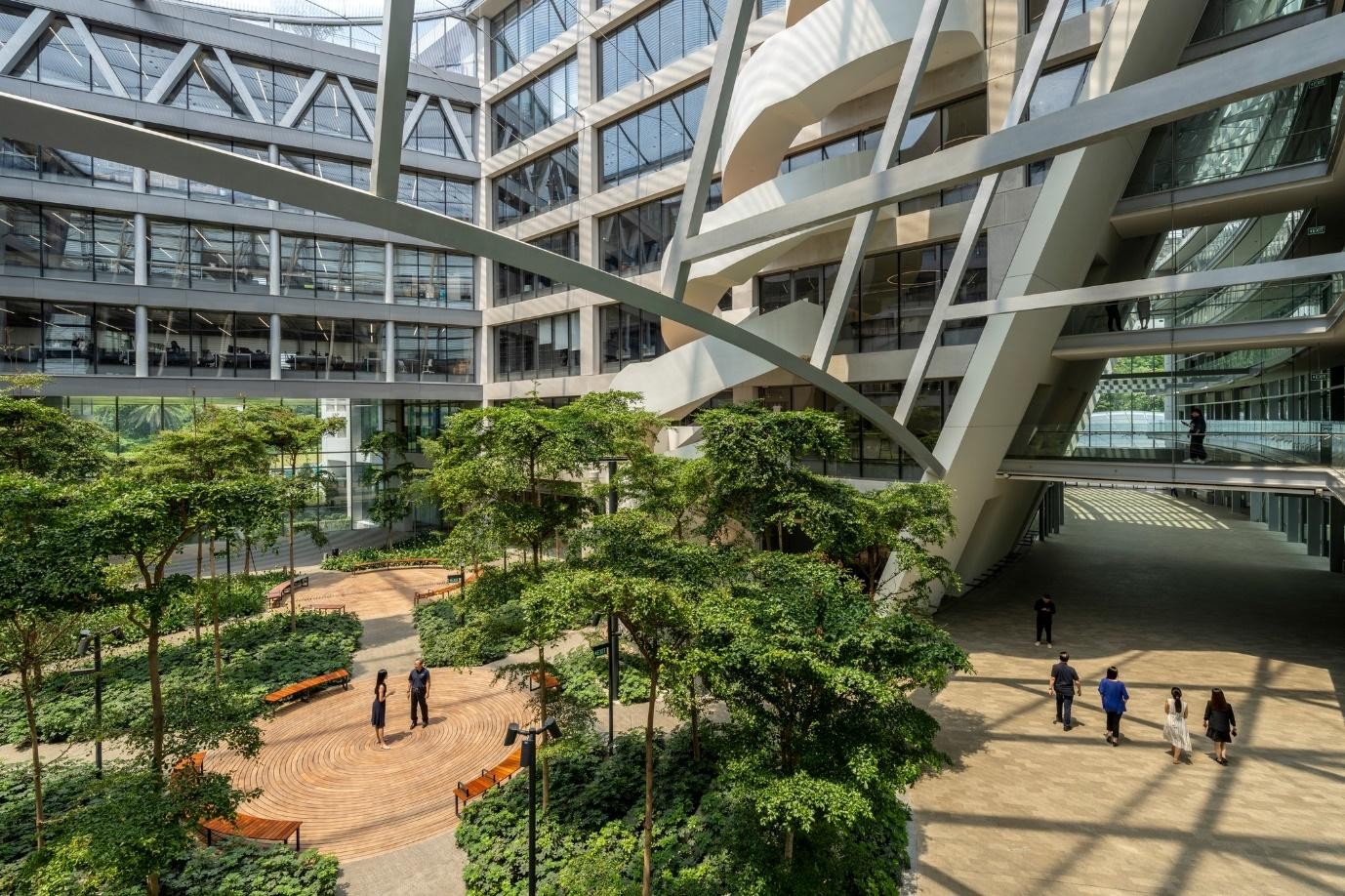As green living takes centre stage in the built environment, professionals like Ms Rena Foo, Senior Manager of Innovation and Sustainability at Surbana Jurong (SJ), are demonstrating how integrating sustainable practices into buildings can elevate human well-being. Whether at home, in schools or offices, embracing green design isn’t just about environmental responsibility—it’s about improving the quality of life of those who are in the buildings, enhancing productivity, and even creativity.
In our “Let’s Go Talk” series, we interview industry leaders who are redefining how we think about green spaces and their impact on our daily lives. Rena shares her passion for embedding sustainability into schools, transforming them into inspiring environments that support both learning and living well.
Q: Firstly, could you share with us the work you do at Surbana Jurong?
At Surbana Jurong (SJ), I’m part of the Innovation and Sustainability team within our facilities management arm, SMM. I work closely with various operations teams on-site, advising and assisting clients in identifying opportunities to optimise energy usage, which enhances overall efficiency and reduces operational costs. Additionally, I guide them through the process of attaining green building certifications to ensure regulatory compliance. I also focus on promoting sustainable practices aligned with ESG fundamentals, helping organisations become responsible corporate citizens while minimising their environmental footprint.
Q: What are some features that make a school a ‘green building’?
A green school includes features like energy-efficient lighting, solar panels, water-efficient fittings and systems, and the use of sustainable materials that reduce environmental impact. Passive design features like natural ventilation, daylighting, and proper insulation also improve energy efficiency while enhancing indoor air quality.
Q: How do green spaces impact the well-being of students and staff?
Green spaces in schools, like gardens and outdoor areas, significantly improve the well-being of students and staff. They reduce stress, boost mood, and enhance focus, leading to better academic performance and a more positive school environment. These spaces also encourage physical activity and social interaction.
Q: Building managers and owners may think it takes a lot of work to be a green building. Is this true?
Building green features into school buildings does not always require a major overhaul. Schools can adopt simple, cost-effective steps to incorporate green practices, such as installing energy-efficient LED lighting and equipment, using water-saving fixtures, and utilising recycled materials. Incorporating natural ventilation also helps improve air quality.
Additionally, engaging the school community in sustainability initiatives, such as recycling programs and environmental education, fosters a culture of sustainability while reducing the school’s overall environmental footprint. These changes not only benefit the environment but also create a healthier learning environment for all students.
Q: Are there any recent trends and innovations that are shaping the future of green buildings?
Recent innovations in the green building space reflect a shift towards making buildings not only more energy-efficient but also healthier, more resilient, and more aligned with the principles of sustainability and circular economy. Some of the latest innovations that are shaping the future of green buildings include smart building technologies like IoT-enabled systems, AI for energy management, as well as digital twin technology. Additionally, net-zero energy building designs are gaining traction, enabling schools to generate as much energy as they consume through renewable energy systems such as solar PV.
Q: What are some innovative projects in schools that Surbana Jurong has been involved with?
Surbana Jurong holds a leading position in the management of educational institutions, offering comprehensive services in Architecture, Engineering, Planning and Facilities Management. Our goal is to help schools transform into smart, sustainable campuses, playing a vital role in fostering a greener future.
A notable example is the NUS School of Design and Environment 4, Singapore’s first new-build net-zero energy building. By pushing for higher environmental performance through innovative design, we have set a new benchmark for energy-efficient school buildings, both in Singapore and globally.
On the facilities management front, our dedicated FM arm, SMM, manages the operations of several major educational institutions, including NTU, NUS, the Singapore Institute of Technology, Nanyang Polytechnic and Temasek Polytechnic, as well as over 100 primary and secondary schools, ensuring that these environments are well-maintained, efficient and conducive for learning.
Q: How does Surbana Jurong inspire sustainability beyond the built environment?
At Surbana Jurong, we are committed to instilling a sustainability mindset in the younger generation through our Builders of Tomorrow programme, which we launched two years ago. This initiative uses an interactive and creative approach to engage Secondary 2 students by challenging them to imagine the buildings of the future using LEGO.
While students are building their models, our engineers and architects explain the importance of designing and operating greener buildings. This hands-on experience not only encourages creativity but also helps students understand the role sustainable building practices play in shaping a greener and more resilient future.





